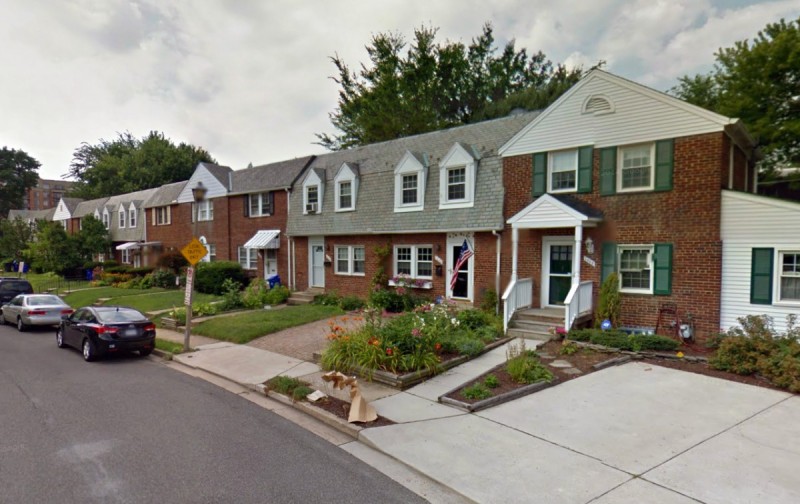Arlington banned rowhouses in 1938, and we’re suffering the consequences now

Some of the last pre-war rowhouses built in Arlington. Image created with Google Maps.
We first published this article on May 17, 2017. The history is still relevant, so we’re sharing it again.
The Washington region’s dramatic undersupply of missing middle housing such as duplexes and fourplexes is a serious and well-documented problem. One reason it’s so severe: Arlington banned rowhouses in 1938.
Arlington’s rowhouse history
At the time, Arlington was a fast-growing streetcar suburb. Its population boomed from 16,000 in 1920 to 57,000 in 1940, and then to 135,000 in 1950.
And although much of Arlington’s early growth took the form of bungalows, by the late 1930s more and more of it was happening as rowhouses. Numerous applications were coming in every year to build rowhouse blocks like the one on North Monroe Street.
That didn’t sit well with community leaders at the time, who hoped to preserve Arlington’s then-suburban character. Rowhouses, they believed, would “mar the suburban landscape.” And so, in 1938, the county changed its zoning to prohibit rowhouses.
A rush of at least 11 developers tried to get in before the prohibition, but were denied by county officials. The ban was on, and Arlington rowhouse construction ground to a complete halt, just as it had been heating up.
The ban persisted through Arlington’s crucial boom years, until the 1960s when the sprawl leap-frogged west to Fairfax County, growth in Arlington slowed to a trickle, and the county began worrying more about infill. After 1965 rowhouses were once again allowed, but only as suburban-style townhouses, with mandatory off-street parking, large setbacks, and cul-de-sac-like streets.
That would eventually change too (today Arlington allows urban-style rowhouses), but the damage was done. Despite demand for higher densities, the vast majority of county land was built out as lower density detached houses.
A lasting and damaging legacy
Today, Arlington is the Washington area’s second most urban jurisdiction, behind the District. According to its place in our metropolitan hierarchy, Arlington should have a lot of rowhouses. But it doesn’t, because 79 years ago preserving a community character that was unpreservable anyway was a higher priority than building enough housing during an ongoing boom.
Now, amidst another boom, these problems are exaggerated. More and more people want to live in urban rowhouses, but the supply is limited, and in many cases land use and zoning laws make it difficult to build them. To find affordable rowhouses, middle-class buyers have gone to the urban core’s lower-income neighborhoods, increasing demand and prices.
Meanwhile, contemporary Arlingtonians are left pondering why their community in particular faces such a stark missing middle problem.
Had Arlington allowed rowhouses during its boom years, it wouldn’t have solved every problem our region has today, but the problems would be lesser, and easier to tackle. A supply of rowhouse neighborhoods in Arlington could have accommodated scores of thousands of people, dramatically easing affordability and price pressure all over the region, including within Arlington.
And, ironically, Arlington today would be less reliant on the high-rise housing that now makes up the majority of its growth, and in which all the community’s eggs have been necessarily placed.
As we respond to the region’s housing shortage in 2017, we have the choice of doubling down on past mistakes, or learning from them. We can fight a losing battle to resist change, with massive and lasting consequences, or we can find a way to grow responsibly, fairly, and affordably.
